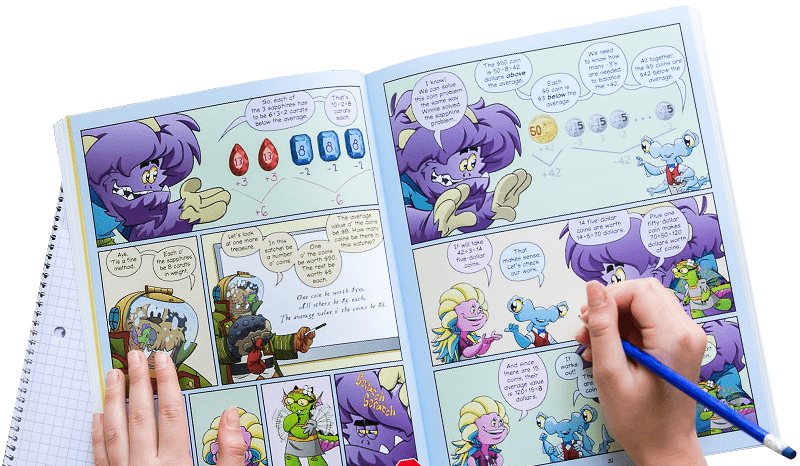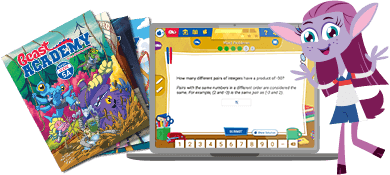Carronade
Use your symmetry skills to sink your opponent's fleet before they sink yours.
Instructions
Fold a piece of paper in half. Each player draws 3 ships in their color on their side of the fold. These ships should be roughly the same size as each other.

Players take turns (youngest first) firing cannonballs to try and sink each other's ships. To fire a cannonball, use a pencil to draw a dark dot on your side of the paper (the same side as your ships).

Then fold the paper over and scribble over the dot you just drew.

The dot will transfer to your opponent's side of the paper!

Unfold the paper and see where your cannonball landed. The goal is to hit your opponent's ship. When a ship gets hit by a cannonball, it sinks. Draw an X over sunken ships.

The first player to sink their opponent's entire fleet wins!

Don't forget: it's Beast Academy Playground, not Beast Academy Study Hall. Change the rules, be silly, make mistakes, and try again. The Variations and Learning Notes are here for you if you want to dive deeper, but not all of them apply to learners of every age. The most important thing is to have fun.
What do you think of this activity?
We're always looking to improve. Submit your feedback to us below.
- markers
- paper
- pencil
- symmetry
- spatial reasoning
- 4.G.A.3

Ready to level up?
Keep problem solving with Beast Academy’s full math curriculum for students ages 6–13. Check out our captivating comic book series and immersive online platform.
LEARN MOREBring problem-solving to your classroom
Keep your entire class engaged with a full book and online math curriculum, for students ages 6–13. 98% of teachers say they’re satisfied with Beast Academy.
LEARN MORE



Ready to level up?
Keep problem solving with Beast Academy’s full math curriculum for students ages 6–13. Check out our captivating comic book series and immersive online platform.
LEARN MOREBring problem-solving to your classroom
Keep your entire class engaged with a full book and online math curriculum, for students ages 6–13. 98% of teachers say they’re satisfied with Beast Academy.
LEARN MORE
Sign up to be notified when new videos are released.
















































